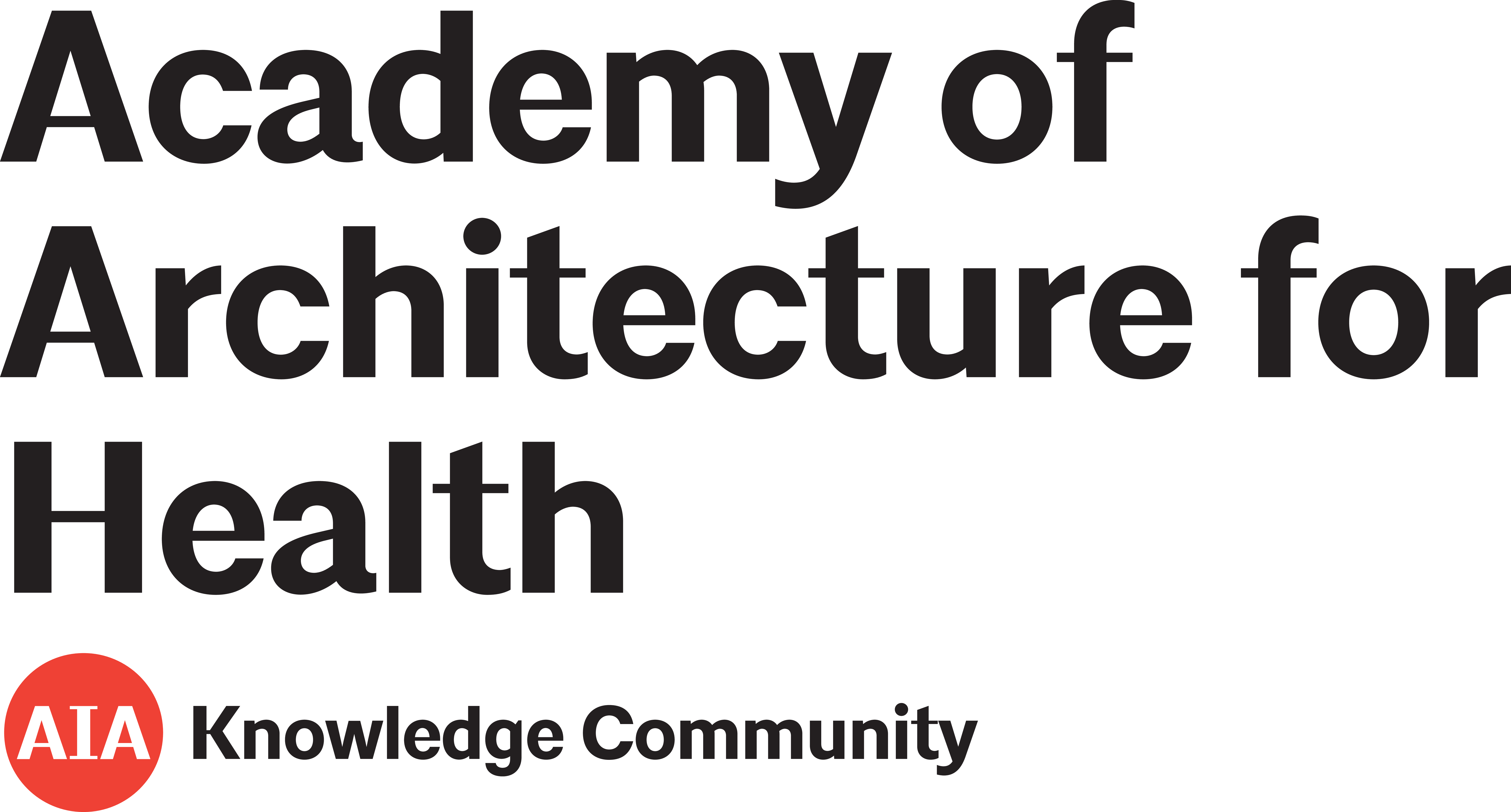The relationship between the quality of the built environment and the quality of life of people with dementia in residential care
2016
Dementia
Journal Article
Issue 4
Volume 15
Pages 663-680
Author(s): Fleming, R., Goodenough, B., Low, L.-F., Chenoweth, L., Brodaty, H.
Over the last 35 years there have been studies pertaining to the benefits of facilities designed for people with dementia. In recent years literature has also indicated that quality of life (QoL) is related to different levels of cognitive functioning and activities of dementia patients in care homes. The authors, however, indicate that these studies were inadequate in providing a clear picture...
Added October 2017
Exploring staff perceptions on the role of physical environment in dementia care setting
2016
Dementia
Journal Article
Issue 4
Volume 15
Pages 743-755
Author(s): Lee, S. Y., Chaudhury, H., Hung, L.
Person-centered care is spreading into environments for the elderly population, particularly those with dementia. It is a philosophy of care recognizing that each person has an equal right to dignity, respect, and to participate in their environment (Alzheimer Society of Canada, 2011; Brooker & Surr, 2005). Recently, attention in the literature has been paid to studying the impact the built...
Added October 2017
Evaluation of hospital outdoor spaces through users’ participation analysis
2017
Facta Universitatis, Series: Architecture and Civil Engineering
Journal Article
Issue 1
Volume 15
Pages 73-84
Author(s): Djukanovic, Z., Maric, J., Giofrè, F.
Hospital outdoor spaces (HOS) have an important role in healthcare facilities that specifically impacts the healing process. Literature reviewed by the authors refers to HOS as left-over spaces for supporting other medical activities.
Added August 2017
Increasing Patient Safety Through Resilient Design: Using Human Factors Engineering and Environmental Support Mechanisms to Reduce Potentials of Hospital Acquired Infection
Author(s): Platt, L. S., Greene, M.
Added July 2017
Suicide risk and absconding in psychiatric hospitals with and without open door policies: A 15 year, observational study
2016
The Lancet Psychiatry
Journal Article
Issue 9
Volume 3
Pages 842-849
Author(s): Huber, C. G., Schneeberger, A. R., Kowalinski, E., Fröhlich, D., von Felten, S., Walter, M., Zinkler, M., Beine, K., Heinz, A., Borgwardt, S., Lang, U. E.
Suicides and absconding by inpatients are both situations that present serious challenges for medical institutions. For this reason, many psychiatric wards use permanently locked doors to help promote patient safety.
Added June 2017
Towards Healing Environment for the Inpatient Unit in Psychiatric Hospital
Author(s): Ramadan, M. G.
Previous research shows that physical designs within healthcare environments play a key role in promoting patient well-being. The design of a given healthcare facility directly affects the efficiency with which care is delivered, as well as affecting the attitudes, beliefs, and behaviors of its staff members.
Added June 2017
Door locking and exit security measures on acute psychiatric admission wards: Door locking on admission wards
2011
Journal of Psychiatric and Mental Health Nursing
Journal Article
Issue 7
Volume 18
Pages 614-621
Author(s): Nijman, H., Bowers, L., Haglund, K., Muir-Cochrane, E., Simpson, A., Van Der Merwe, M.
Locked exit doors exist in psychiatric wards for various reasons. Sometimes regional legislation requires locked exits in these wards. At other times, these security measures are put in place in order to prevent patients from escaping a facility, to prevent unwelcome visits, to enhance the staff’s sense of control, or to improve overall patient and staff safety.
Added June 2017
Developing family rooms in mental health inpatient units: An exploratory descriptive study
2015
BMC Health Services Research
Journal Article
Author(s): Isobel, S., Foster, K., Edwards, C.
Adult inpatients receiving treatment at mental health facilities often wish to visit with family members. Indeed, previous research indicates that caregivers, consumers, and medical professionals agree that children of parents with mental illness (COPMI) should be able to spend time with their parents for the mutual benefit of both patients and families.
Added June 2017
Interventions to improve hospital patient satisfaction with healthcare providers and systems: A systematic review
2017
BMJ Quality & Safety
Journal Article
Issue 7
Volume 26
Pages 596-606
Author(s): Davidson, K. W., Shaffer, J., Ye, S., Falzon, L., Emeruwa, I. O., Sundquist, K., Inneh, I. A., Mascitelli, S. L., Manzano, W. M., Vawdrey, D. K., Ting, H. H.
Added June 2017
A Systematic Review of Mixed Methods Research on Human Factors and Ergonomics in Health Care
2015
Applied ergonomics
Journal Article
Author(s): Carayon, P., Kianfar, S., Li, Y., Xie, A., Alyousef, B., Wooldridge, A.
This paper presents a systematic review of studies dealing with human factors and ergonomics (HFE) issues in both healthcare technology and in the work of healthcare employees. The researchers employ a mixed methods approach, meaning their review incorporates studies that use both quantitative and/or qualitative data during different stages of the research process.
Added June 2017
Subjective evaluation of speech privacy at consulting rooms in hospitals: Relationship between feeling evoked by overhearing speech and word intelligibility score
2017
Applied Acoustics
Journal Article
Author(s): Sato, H., Morimoto, M., Ohtani, S., Hoshino, Y., Sato, H.
Healthcare environments, particularly patient-doctor consulting rooms, are often filled with conversations of a sensitive nature that ideally should be kept private for the well-being of both patients and nearby individuals. Previous studies and relevant standards within healthcare environments have often used speech intelligibility as a subjective measure for assessing speech privacy.
Added June 2017
Selecting a pharmacy layout design using a weighted scoring system
2012
American Journal of Health-System Pharmacy
Journal Article
Issue 9
Volume 69
Pages 796-804
Author(s): McDowell, A. L., Huang, Y.-L.
Previous studies have found that effectively planning the construction of a facility can reduce operational inefficiencies and lower costs by as much as 30%. Since pharmacies are focused on the distribution of supplies rather than interactions with patients, they could hypothetically benefit from process-improvement techniques that are often used in manufacturing industries for layout designs.
Added May 2017
Shifting Landscapes: The Impact of Centralized and Decentralized Nursing Station Models on the Efficiency of Care
2017
HERD: Health Environments Research & Design Journal
Journal Article
Issue 5
Volume 10
Pages 80-84
Author(s): Fay, L., Carll-White, A., Schadler, A., Isaacs, K., Real, K.
As healthcare facilities continue to implement evidence-based designs and increase in overall size, there is a lack of research examining how these changes affect the efficiency of patient care processes. Along with the physical growth of modern healthcare environments, advances in medical technology have increased the amount of multitasking required of nurses and other healthcare workers.
Added May 2017
The Value Analysis of Lean Processes in Target Value Design and Integrated Project Delivery
Author(s): Nanda, U., Rybkowski, Z., Pati, S., Ai, D., Kalyanaraman, N., Nejati, A.
Integrated project delivery (IPD) is a project delivery method that integrates systems, people, business models, and practices in order to optimize project results and maximize efficiency. IPD is also characterized by early involvement of key participants, collaborative decision-making, and liability waivers.
Added April 2017
A Study of Hospital Inpatient Unit Design Factors Impacting Direct Patient Care Time, Documentation Time, and Patient Safety
Author(s): Clark, T., Combs, S.
Architects have experimented with numerous inpatient care unit (IPU) designs, such as racetracks, “T-shapes,”, “L-shapes,”, triangular forms, and many others. There is no clear consensus on how the designs of these spaces and other physical features within IPUs influence healthcare provider productivity, safety, and overall effectiveness.
Added April 2017
Reducing hospital noise with sound acoustic panels and diffusion: a controlled study
2016
BMJ Quality & Safety
Journal Article
Issue 8
Volume 25
Pages 644
Author(s): Farrehi, P. M., Nallamothu, B. K., Navvab, M.
Ambient noise is a well-known source of stress in healthcare environments. Hospitals have employed methods such as shielding patients with closed doors, altering staff behaviors, and moving equipment, but these approaches can disrupt workflows and do not address the realities of sound generation within hospitals.
Added March 2017
Physical design factors contributing to patient falls
2021
Journal of Patient Safety
Journal Article
Issue 3
Volume 17
Pages e135-e142
Author(s): Pati, D., Valipoor, S., Cloutier, A., Yang, J., Freier, P., Harvey, T. E., Lee, J.
Previous studies show that patient falls in hospitals are not only a leading cause of disability, injury, and mortality, but that they also affect the family members of patients, the caregivers, and the overall healthcare system.
Added February 2017
A Material World: A Comparative Study of Flooring Material Influence on Patient Safety, Satisfaction, and Quality of Care
2017
Journal of Interior Design
Journal Article
Issue 1
Volume 42
Pages 85-104
Author(s): Harris, D.
Added February 2017
Post-Occupancy Evaluation of a Mental Healthcare Facility Based on Staff Perceptions of Design Innovations
2017
HERD: Health Environments Research & Design Journal
Journal Article
Issue 4
Volume 10
Pages 121-135
Author(s): Kalantari, S., Snell, R.
Post-occupancy evaluation (POE) is a research method for gathering information on the effectiveness of new architectural designs in healthcare environments. POE can help healthcare providers and designers gauge whether or not a given design is achieving its intended purpose. Since evidence-based designs are becoming more widely implemented in a variety of healthcare environments, POE could prove useful in many different departmental contexts. The authors note that the application of POE in research focusing on mental healthcare facilities is rare, signaling a need for exploration
Added February 2017
Compliant flooring to prevent fall-related injuries in older adults: A scoping review of biomechanical efficacy, clinical effectiveness, cost-effectiveness, and workplace safety
2017
PLOS ONE
Journal Article
Issue 2
Volume 12
Pages 1-23
Author(s): Lachance, C. C., Jurkowski, M. P., Dymarz, A. C., Robinovitch, S. N., Feldman, F., Laing, A. C., Mackey, D. C., Tranah, G.
Compliant flooring may be broadly defined as any floor covering or flooring system with some degree of shock absorbency. Numerous previous studies have shown that different forms of compliant flooring can reduce the severity and incidence of fall-related injuries in older adult patients.
Added February 2017




